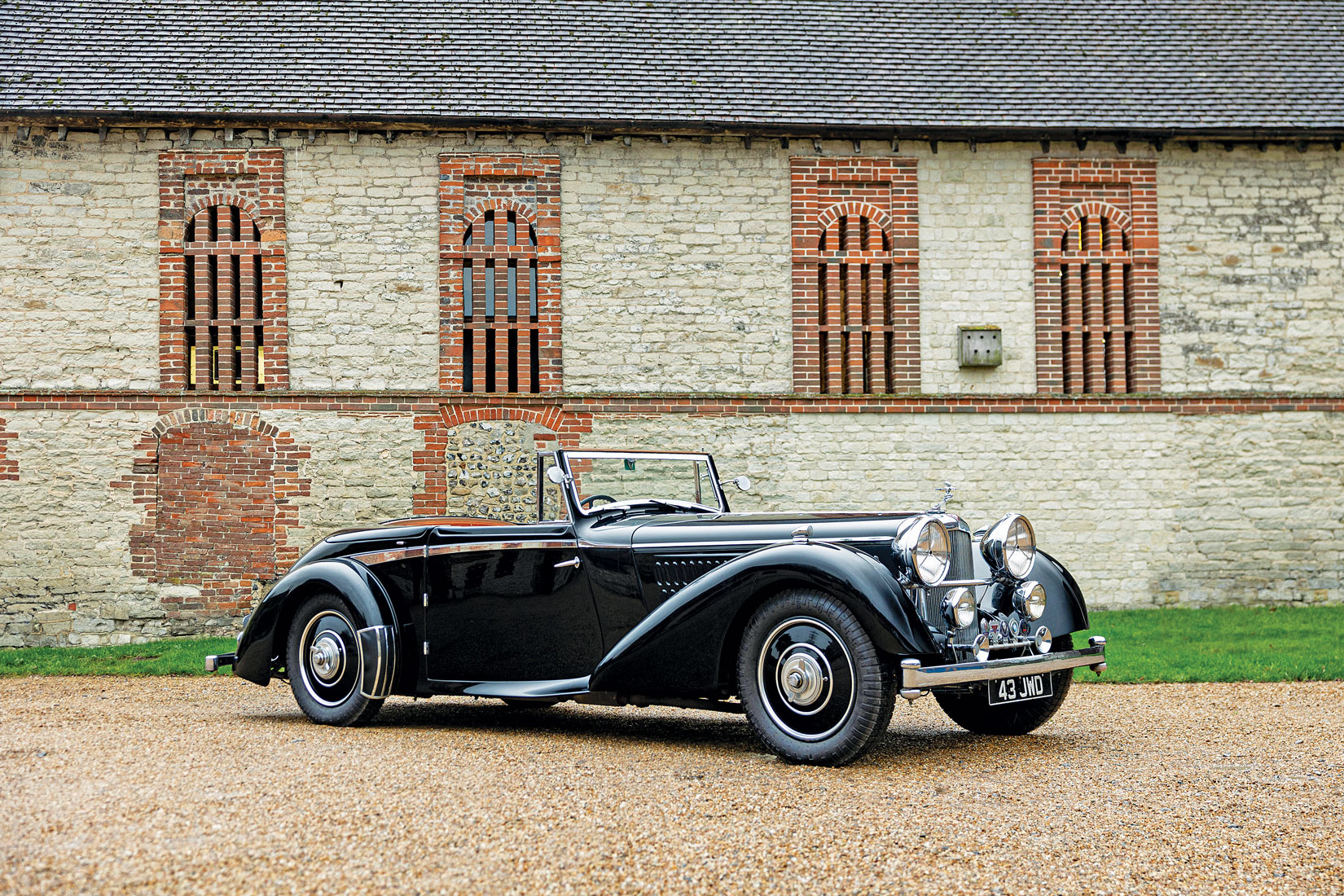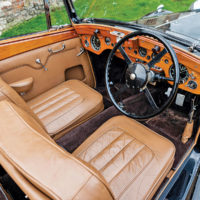SCM Analysis
Detailing
| Vehicle: | 1938 Alvis 4.3-Litre Short-Chassis Drophead Coupe |
| Years Produced: | 1937–40 |
| Number Produced: | 198 |
| Tune Up Cost: | $650 |
| Chassis Number Location: | Stamped into cast-aluminium bulkhead/scuttle just above steering column |
| Engine Number Location: | Stamped into right-hand engine bearer |
| Club Info: | Alvis Owner Club |
| Website: | http://www.alvisoc.org |
| Alternatives: | 1930–35 Invicta S-type, 1933–40 Bentley 4¼, 1937–40 Lagonda LG6 |
This car, Lot 40, sold for $314,670 (£241,500) at Bonhams’ Goodwood Members’ Meeting sale on April 10, 2022.
Alvis is not well known in the U.S., but at home in the U.K., the marque has a strong following, and the hardware is well supported, too. Alvis were robustly made and last a long time. All of the factory drawings still exist, along with many original spare parts, lovingly tended by Red Triangle, a specialist named for the company’s signature badge. It has held the passenger-car archives, inventory and stock since they were moved to its safekeeping in 1968, Alvis itself having been under the ownership of Rover since 1965.
In recent years this has gone further, to the point where the new Alvis Car Company, under the custodianship of arch-enthusiast Alan Stote, can build you a new “continuation” 4.3. These come with upgrades such as disc brakes, LED lighting and, most important, fuel injection so they can run a catalytic convertor. The first customer car was delivered to Japan in 2020.
Unusual, if not unique
The 4.3 was the ultimate expression of the Speed 20 and 25 series, and here the coachwork by Whittingham & Mitchel is unusual, probably unique. The most elegant and desirable 4.3s tend to be bodied by Vanden Plas, but this example has full doors and hides its folding top better. W&M originally bodied motor coaches, but in the ’30s clothed some cars including Allards, MGs and Wolseleys. Archive photos suggest it bodied at least one other 4.3, and a couple of 12/70 tourers.
This example, therefore, would have been one of the last cars it built in Fulham. From the car record: “Special Body Throughout, Black, Wings & Wheels Black. Special Brown Leather. Adjustable arm rests fitted to both doors. Philips radio set fitted. Stopwatch fitted. Special high-compression engine fitted.”
Whatever the true numbers, it follows that with such a small production window, a W&M body is a rare thing. This one has survived incredibly well. It was damaged in a garage collapse in 1996 while in the U.S. and must have been repaired there, because its 2000 sale-catalog photo shows it straight and shiny. Its subsequent now-20-year-old restoration still presents well, with the interior leather mellowing nicely, and just a few oil stains down the engine block to show that it’s been enjoyed.
The vendor diligently researched its history, listing all known owners. Photos posted on alvisarchive.com show that in 2012 it had all-black wheel discs with no bright detailing, but otherwise it is the same today. Red Triangle invoices on file for the restoration and various works include fitting an overdrive (2009); a crankshaft and con-rod set (2010); new Alfin brake drums (2012); engine overhaul (2015); and new Blockley tires (2018). The owner has added twin electric cooling fans, which he says are removable in a minute. The fitted stopwatch, adjustable armrests and radio were missing when he bought the car, but have been replaced with period-correct items, and there’s an electronic speedo tucked discreetly under the dash.
Great expectations
There is a disparity between the prices of the best short-chassis 4.3s and the long-wheelbase cars (including the 3.5-liter Speed 25s they are descended from). Short-chassis cars with the most elegant bodies are a long way ahead of the others.
A similar example to our subject car (by Vanden Plas) was sold by Bonhams for $681k in 2017 (SCM# 6856382), though the pound was then a bit stronger against the dollar. Just a few months later, though, another went unsold at $544k against a $530k–$600k estimate (SCM# 6868243). In Paris in February 2019, the 1938 4.3 short-chassis Works demonstrator (s/n 14812) failed to sell against a $482k–$540k estimate, though it was later declared sold at, we assume, something around $490k. Perhaps that single sale in 2017 skewed expectations rather high, leading to the rash of no-sales.
In 2000, the vendor paid Coys $80,322 for our subject car. Rating it condition 1- at the time, we observed: “With original engine, gearbox, and stylish coachwork intact, and two discerning previous owners in U.K. on file. Very well-presented paint, trim and bright bits.” Our conclusion: “An Alvis rolling chassis was much cheaper than the Lagonda or Bentley competition in period, and this good looker offered Bugatti elegance for much less money today.”
The same still holds true. This time the estimate range was more realistic, $235k–$313k, perhaps due to its one-off status — a Vanden Plas body might be seen as an easier bet come resale time. The car hammered right in the middle of that range. The sale price was more than most Derby Bentleys and the last Lagonda LG6 drophead we saw at auction, but less than an Invicta. At about half the price of that 4.3 that set the top of the market in 2017, and arguably as elegant, I’d say this was good money for the seller and fair for the buyer. ♦
(Introductory description courtesy of Bonhams.)



